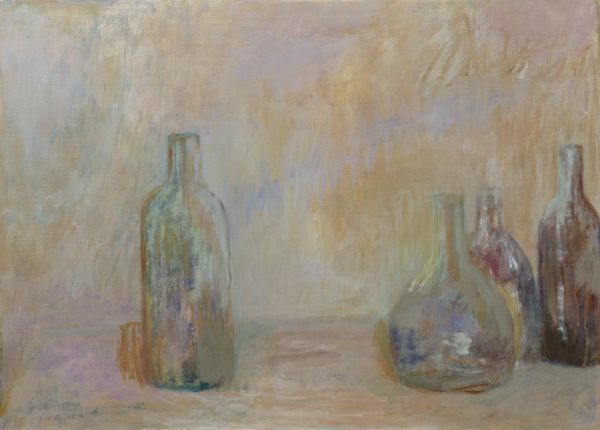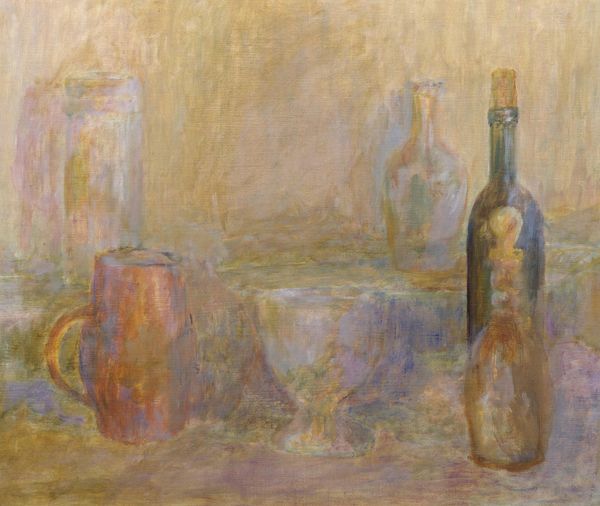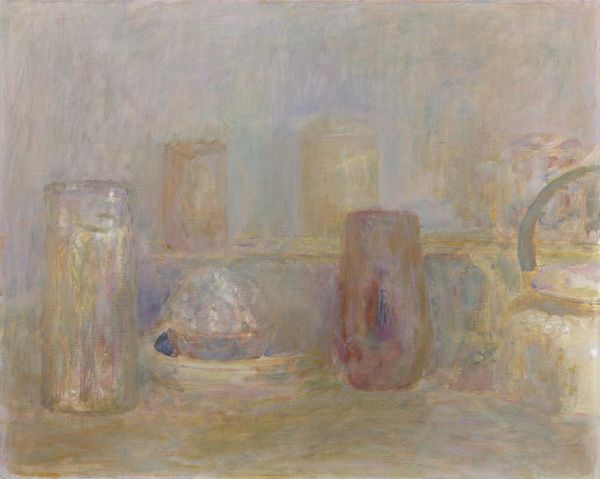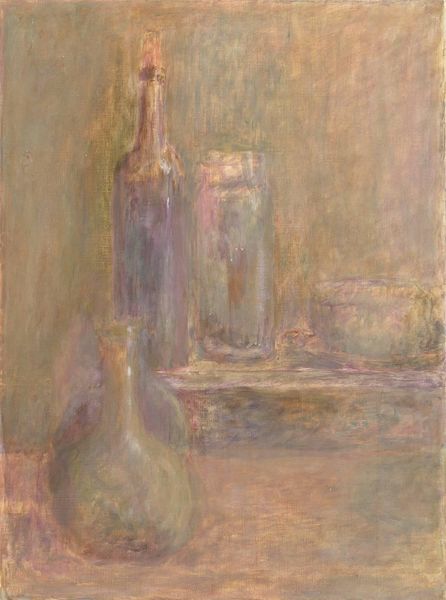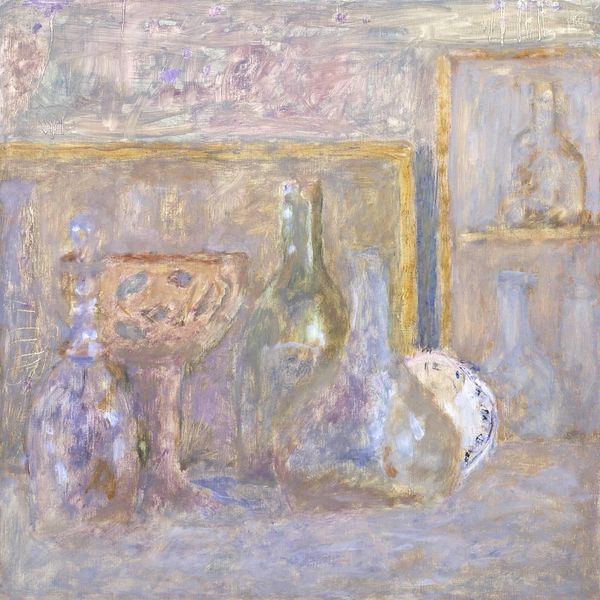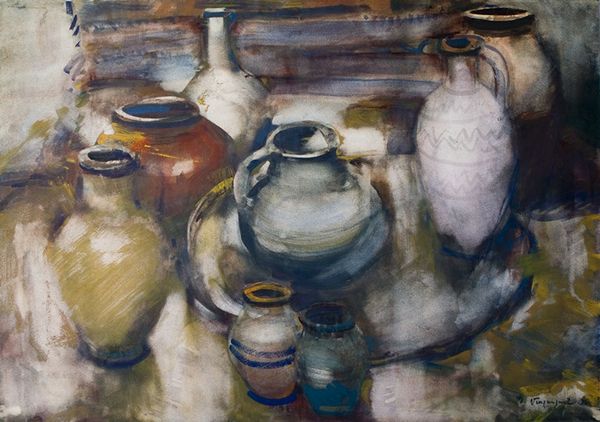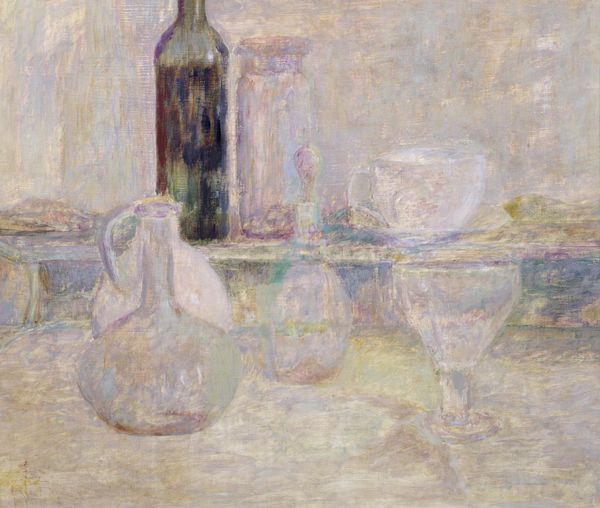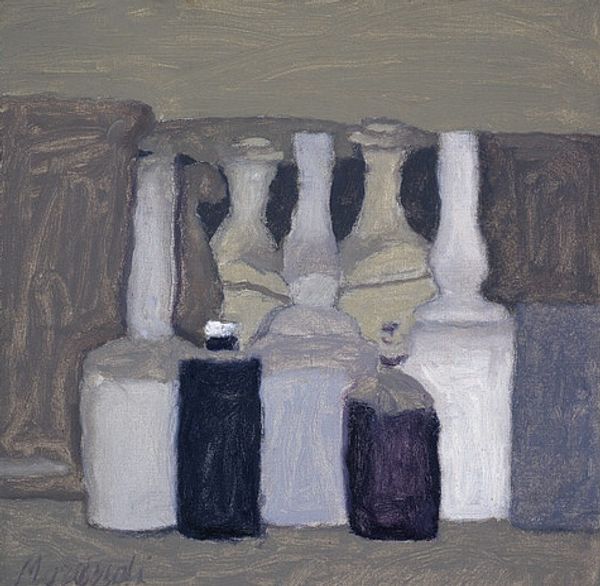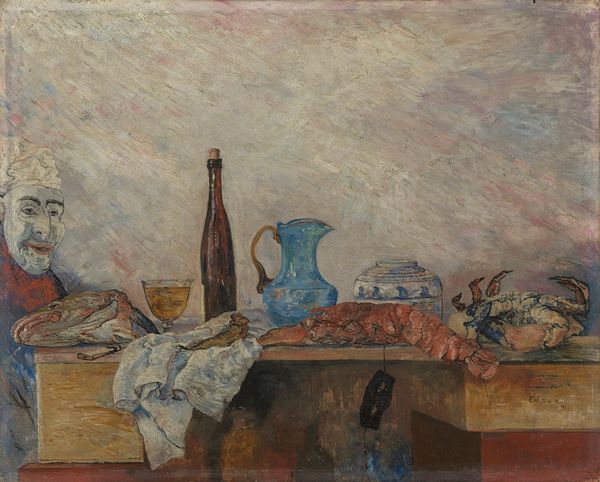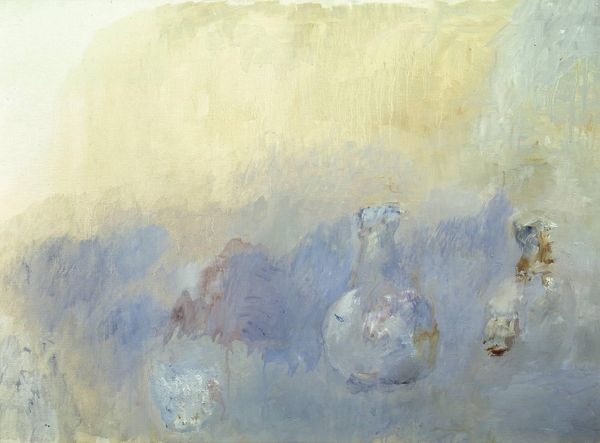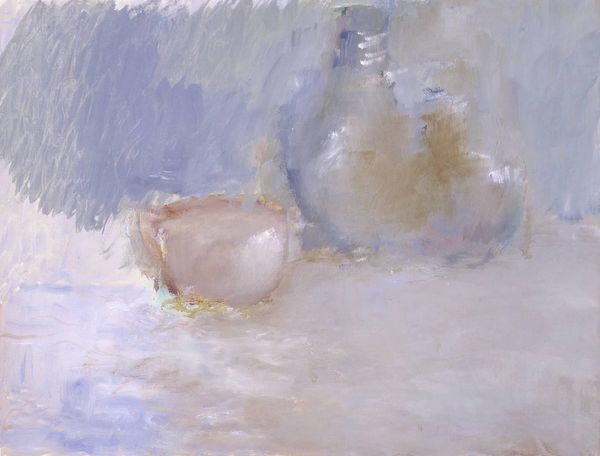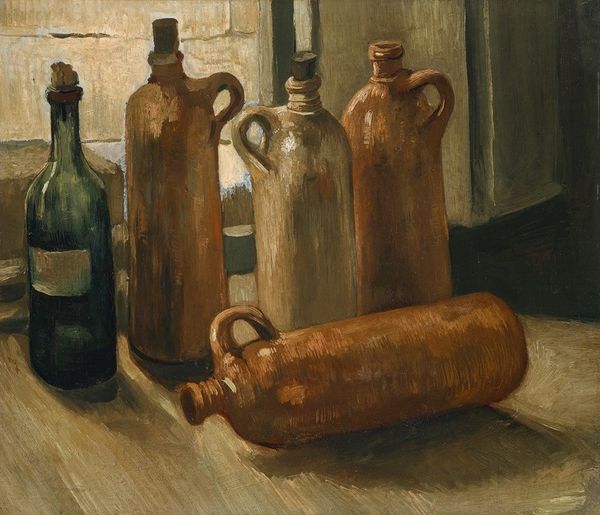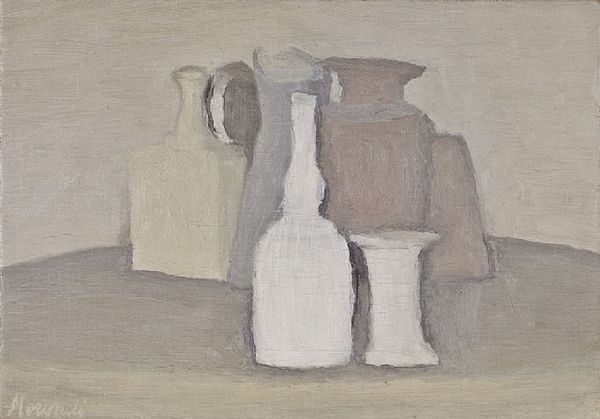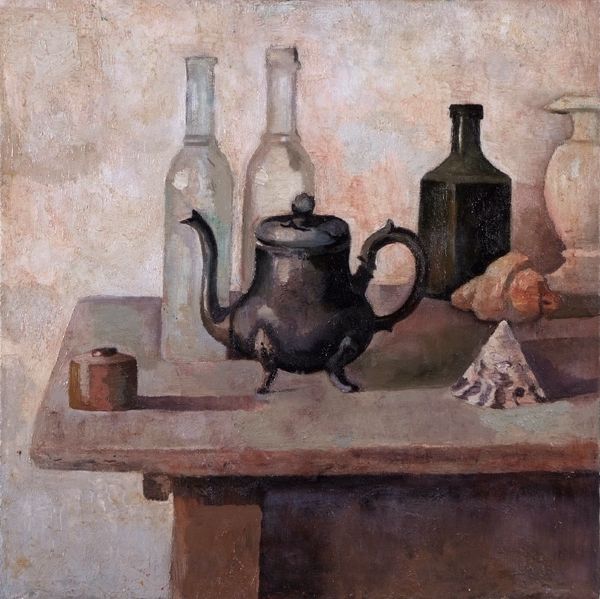
Dimensions: support: 407 x 509 x 19 mm
Copyright: © The estate of Adrian Stokes | CC-BY-NC-ND 4.0 DEED, Photo: Tate
Editor: We’re looking at Adrian Stokes’ "Still Life," date unknown, housed at the Tate. The arrangement of bottles creates a hazy, almost dreamlike quality. What compositional elements stand out to you? Curator: Note how Stokes utilizes a restricted palette, leaning heavily on muted yellows and blues. The forms are defined not by sharp lines but by subtle shifts in tone and texture. Observe, too, the interplay of light and shadow, which serves to flatten the picture plane, emphasizing the painting's inherent two-dimensionality. Do you find it successful? Editor: Yes, the layering definitely creates depth in an interesting way. I appreciate the formal approach, it gives me more to consider. Curator: Indeed. Focusing on these elements allows us a deeper engagement with the artist's choices and intentions.
Comments
Join the conversation
Join millions of artists and users on Artera today and experience the ultimate creative platform.
tate 6 months ago
⋮
Adrian Stokes is best known as the author of books and articles about modern art, particularly on Henry Moore (1898-1986), Ben Nicholson (1894-1982) and Barbara Hepworth (1903-1975), and on the appreciation of Italian Renaissance art and architecture (his namesake, the landscape painter Adrian Stokes 1854-1935, is no relation). He was also a painter of landscape, the nude and still life, depicting his subjects in even tones of warm browns and reds so that they appear indistinct. Stokes taught himself to paint in the 1930s as a practical extension of his criticism, and learnt also from his first wife, the abstract painter Margaret Mellis (born 1914). He exhibited in London in the 1950s and 60s, but remained a private artist, highly regarded among a circle of intellectuals, but not generally known, and with sufficient private means not to need to sell his work. His writing is abstract and psychoanalytical, concerned with the perception of form. He was a keen admirer of Melanie Klein (1882-1960) whose psychoanalytical thinking informed Stokes's writing. Late in his life he wrote approvingly of Turner, in a way that might describe his own painting, 'There is a long history of indistinctness in Turner's art, connected with what I have called an embracing or enveloping quality, not least of the spectator with the picture' ('Painting and the Inner World', Gowing, III, p.237). Stokes's paintings depict objects whose substance is rendered indistinct by broken brushwork that conveys a lambent light, dissolving the distinction between form and ground. In 2001 Tate was bequeathed a group of eight of Stokes's paintings by his friend and admirer, the critic David Sylvester (1924-2001). He had previously lent them in 1993 to Tate's annual 'New Displays' of the collection, a procedure newly devised in 1990 by the Gallery's director Nicholas Serota, and Sylvester subsequently asked that this bequest should be named in his honour. In 1968 Sylvester had dedicated his catalogue for the Arts Council Henry Moore exhibition to Adrian Stokes. Further reading:Adrian Stokes 1902-72, A retrospective, exhibition catalogue, Serpentine Gallery, London 1982.Lawrence Gowing, ed., The Critical Writings of Adrian Stokes, London, l-III, 1978. David JenkinsFebruary 2002
